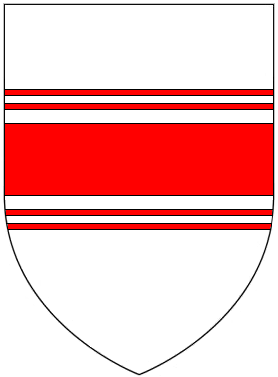
Bartholomew de Badlesmere, 1st Baron Badlesmere was an English soldier, diplomat, member of parliament, landowner and nobleman. He was the son and heir of Sir Gunselm de Badlesmere and Joan FitzBernard. He fought in the English army both in France and Scotland during the later years of the reign of Edward I of England and the earlier part of the reign of Edward II of England. He was executed after participating in an unsuccessful rebellion led by Thomas, 2nd Earl of Lancaster.
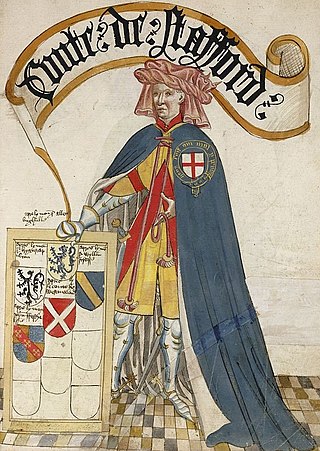
Ralph de Stafford, 1st Earl of Stafford, 2nd Baron Stafford, KG, of Stafford Castle and Madeley Castle in Staffordshire, was an English nobleman and a notable soldier during the Hundred Years' War against France.

Hugh de Courtenay, 1st/9th Earl of Devon of Tiverton Castle, Okehampton Castle, Plympton Castle and Colcombe Castle, all in Devon, feudal baron of Okehampton and feudal baron of Plympton, was an English nobleman. In 1335, forty-one years after the death of his second cousin once-removed Isabel de Redvers, suo jure 8th Countess of Devon he was officially declared Earl of Devon, although whether as a new creation or in succession to her is unknown, thus alternative ordinal numbers exist for this Courtenay earldom.

The de Birmingham family held the lordship of the manor of Birmingham in England for four hundred years and managed its growth from a small village into a thriving market town. They also assisted in the invasion of Ireland and were rewarded with the Barony of Athenry. They were stripped of most of their lands in England by the notorious John Dudley, Duke of Northumberland, who held sway over the young King Edward VI (1547–1553).

Lord Robert de Scales was a Knight Templar and loyal supporter of Edward I in his campaigns in Wales, Scotland, France and Flanders. In 1299 he, and his heirs, were bestowed with the title, Baron Scales and were henceforth known as 'Lord Scales'. He was a signatory of the Baron's Letter to Pope Boniface VIII in 1301.

Edmund de Stafford, 1st Baron Stafford, was the son of Nicholas de Stafford, who was summoned to parliament by writ on 6 February 1299 by King Edward I. He was a signatory of the Baron's Letter to Pope Boniface VIII in 1301.

Sir William Russell (1257–1311) was an English nobleman, knight, and holder of a moiety of the feudal barony of North Cadbury, Somerset, but spent most of his life engaged in the administration and defence of the Isle of Wight, where he obtained by marriage the manor of Yaverland. He served as constable of Carisbrooke Castle, and sat in parliament on two occasions, firstly as burgess for Great Bedwyn, Wiltshire, and then for the County of Southampton. As a baron his military service was called on several times by King Edward I Hammer of the Scots.

Walter de Huntercombe, 1st Baron Huntercombe (1247–1313) was an English military commander during the Wars of Scottish Independence and a Governor of Edinburgh Castle.

Nicholas Carew, Lord of Moulsford, was a baron of medieval England who took part in the Wars of Scottish Independence.

John de Moels, 1st Baron Moels, feudal baron of North Cadbury in Somerset, was an English peer.
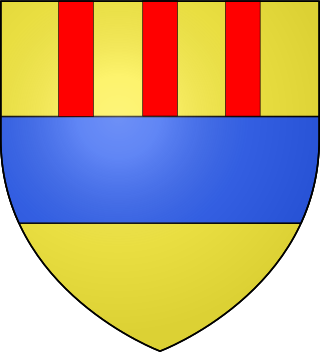
Walter de Fauconberg, 1st Baron Fauconberg, Lord of Rise, Withernwick and Skelton, was an English noble. He fought in the wars in Flanders and was a signatory of the Baron's Letter to Pope Boniface VIII in 1301.

Herny de Teyes, 1st Baron Teyes , Lord of Chilton was an English noble. He fought in the wars in Wales, Flanders and Scotland. He was a signatory of the Baron's Letter to Pope Boniface VIII in 1301.

John le Strange, 1st Baron Strange of Knockyn, Lord of Knockyn was an English noble. He fought in the wars in Wales, Gascony and Scotland. He was a signatory of the Baron's Letter to Pope Boniface VIII in 1301.

Adam de Welles, 1st Baron Welles, Lord of Welles, was an English noble. He fought in the wars in Flanders and Scotland. He was a signatory of the Baron's Letter to Pope Boniface VIII in 1301.
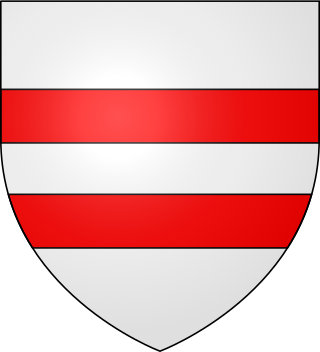
William Martin, 1st Baron Martin , Lord of Cemais and Barnstaple was an English noble. He fought in the wars in Wales, Gascony, Flanders and Scotland. He was a signatory of the Baron's Letter to Pope Boniface VIII in 1301.
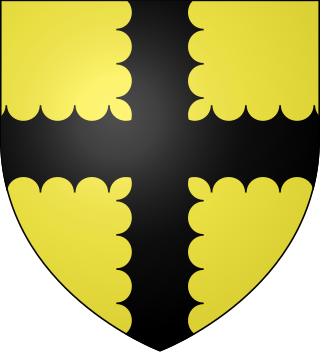
John de Mohun, 1st Baron Mohun , Lord of Dunster was an English noble. He fought in the wars in Flanders and Scotland. He was a signatory of the Baron's Letter to Pope Boniface VIII in 1301.
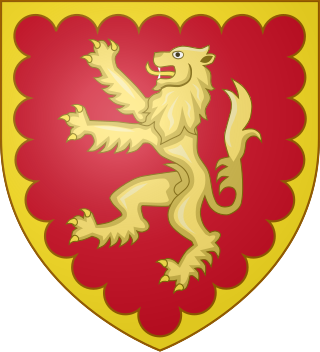
Richard Talbot, Lord of Eccleswall was an English noble. He fought in the wars in Wales, Gascony and Scotland. He was a signatory of the Baron's Letter to Pope Boniface VIII in 1301.
William Touchet, 1st Baron Touchet, Lord of Lewenhales was an English noble. He fought in the wars in Scotland and Gascony. He was a signatory of the Baron's Letter to Pope Boniface VIII in 1301.

Bogo de Knovill, 1st Baron Knovill, Lord of Albomonasterio was an English noble. He served as sheriff of Shropshire and Staffordshire, also serving in the wars in Wales and Scotland and was a signatory of the Baron's Letter to Pope Boniface VIII in 1301.

















